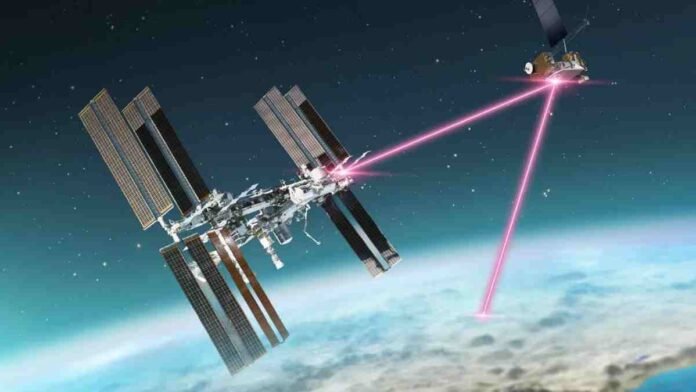NASA is making ground-breaking advances with its new laser communication technology, which has the potential to transform how we experience space missions. Recent tests of this advanced technology indicate that live streams from the Moon may soon become a reality, providing unprecedented opportunities for public engagement and scientific observation.
The recent experiments of NASA demonstrated the outstanding abilities of its laser communication technology. According to Space.com, the freshly installed system has already set several records. Rachel Dudukovich, lead engineer for the High Data Rate Testbed Network (HDTN) at NASA Glenn Research Center, announced that NASA had completed a safe file transfer from the International Space Station (ISS) at speeds exceeding 900 megabits per second. This accomplishment is a historic first in space communication.
“We’ve demonstrated secure file transfer from the ISS at over 900 megabits per second, which is a world record,” Dudukovich informed reporters. This new laser-based method outperforms traditional radio wave communications by utilizing infrared light, resulting in faster data transfer rates and bandwidth.
How Laser Communication Works
Laser communication technology, which uses lasers rather than radio waves, represents a significant advancement in space communications. This method enables much faster data transfer, which is critical for handling the large data volumes required for streaming and complex scientific data.
The technology discusses common problems like long delays and environmental disruptions. The HDTN system includes advanced buffering capabilities that retain information during interruptions and resume transmission when the link is repaired. This ensures a more reliable connection, despite the difficulties posed by space constraints.
Consequences for future missions
Daniel Raible, an electronics engineer and principal investigator at NASA Glenn, highlighted the technology’s ability to transform space communication. “Our protocols and standards make a space network function similarly to the internet,” Raible explained. This advancement will allow astronauts to communicate with Earth in real-time, making it easier to issue commands, exchange text messages, and make video calls.
This method of communication also effectively handles the inherent time delays in space communications. While the traditional internet offers near-instant connectivity, space communications frequently experience delays ranging from a second to several minutes, depending on the distance. The new system’s software handles these delays, increasing communication efficiency and reliability.
Achievements and Future Potential
NASA’s advancements in laser communication technology have been marked by several milestones. In December 2023, the team successfully sent a video of a cat named Taters from 19 million miles away, demonstrating the system’s capabilities. Additional tests in early June 2024 included connecting NASA’s Pilatus PC-12 plane to instruments at NASA’s Glenn Research Center via laser link.
Moving forward
As NASA continues to grow and refine this technology, live streaming from the moon along with other distant space destinations becomes more feasible. This advancement promises to boost public interest in space exploration while also providing scientists with valuable real-time data from lunar missions and beyond.
In summary, NASA’s new laser communication technology has the potential to revolutionize space communication by increasing data transfer rates and connectivity. As testing grows and technology matures, the vision of watching live feeds from the Moon may soon become a reality, ushering in new eras of exploration in space and public engagement with missions in space.



